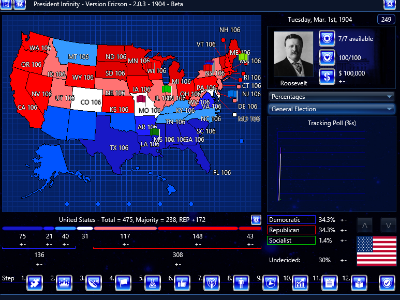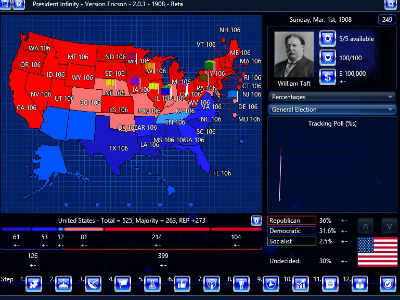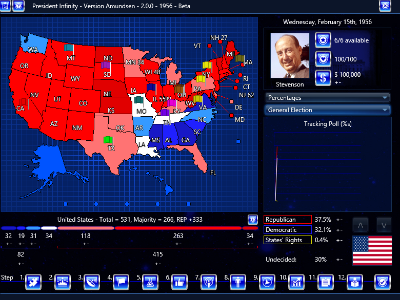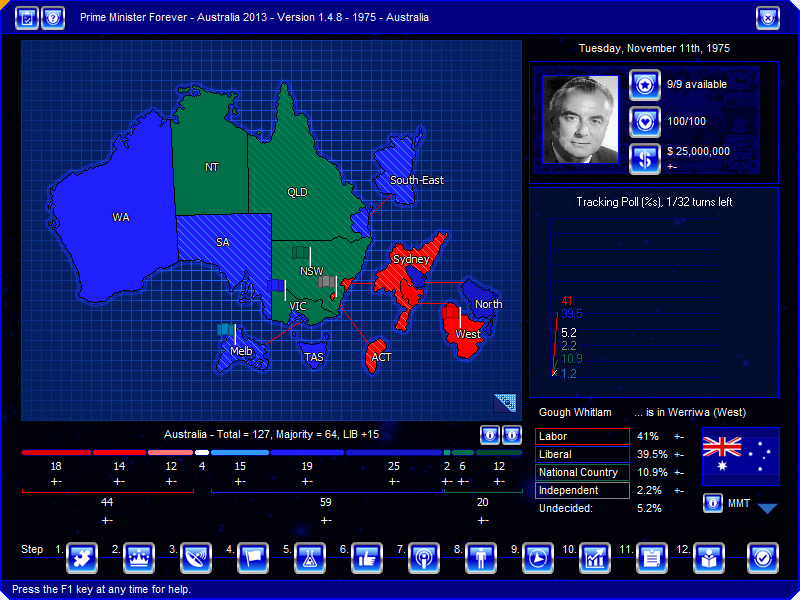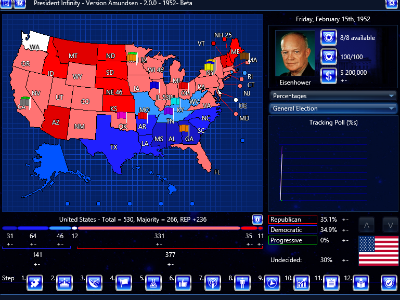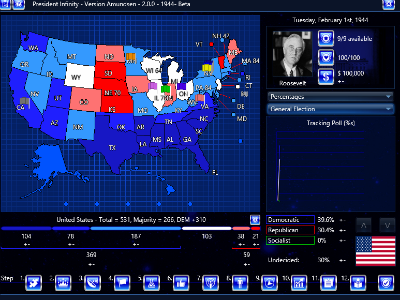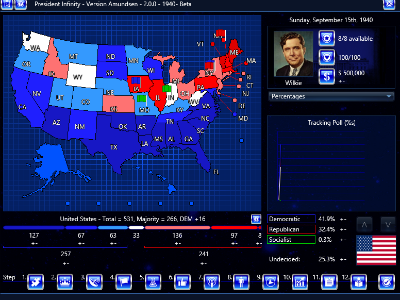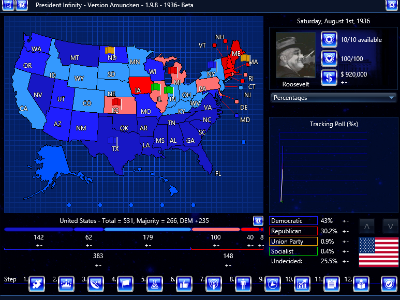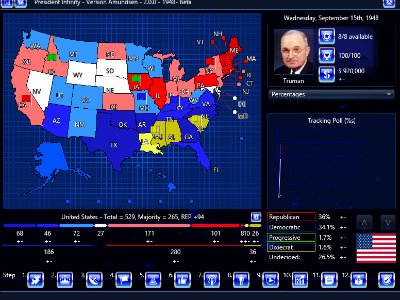
*The Historical Scenario Commission greatly updated this scenario, and it can be downloaded here: United States – 1948 v.2.0
The end of World War II transitions into a Cold War. Domestically, the country fears Communist influence inside of the country. Internationally, the country fears the only other superpower remaining in the world: The Soviet Union. Truman also has many other problems. His popularity is very low and he faces a much more confident Republican Party, which has not held the presidency since Herbert Hoover. The president also must deal with his own party, which is breaking apart at the seams.
For the Democrats in 1948, the party establishment sticks with Truman, as he has the power of incumbency. However, a “Dump Truman” ticket is forming around the moderate Southerner Claude Pepper. Conservative Southerners, unwilling to accept Pepper, support Richard Russell.
The Republicans field their usual candidates–Thomas Dewey for the moderates, Robert Taft for the conservatives and Harold Stassen for the liberals. Other usual candidates include Arthur Vandenberg, Earl Warren and Everett Dirksen. General Douglas MacArthur also has many supporters. Overall, Thomas Dewey, who was the 1944 nominee, is seen as the clear front-runner, as he has presidential campaign experience, and because he has the best shot of unifying the party.
Progressive democrats, who feel Truman is not liberal enough, rally behind Henry Wallace’s Progressive Party. However, the party is hampered by supposed ties to the Communist Party.
Conservative democrats with neo-Confederate sympathies flock to Strom Thurmond’s Dixiecrat or States’ Rights Democrat Party.
This scenario allows for many what-if elections:
- Both parties made attempts at catering to Eisenhower to get him to run for president. What if he had run (as a Republican) in 1948, instead of 1952?
- Conservative John Bricker and moderate Henry Cabot Lodge Jr had supporters wishing them to run. What if they had?
- What if Henry Wallace and Strom Thurmond had not run as 3rd parties, but ran as Democrats against Truman in the primaries?
- What if Harry F. Byrd of Virginia was the Southern option for Democrats?
- What if Cordell Hull, FDR’s brilliant Secretary of State, ran for the presidency? He was both a Southerner and someone respected by those who respected FDR.
- What if FDR has not died in office in 1945 and, despite terrible health, attempted a 5th term in office to ensure that his proposed 2nd Bill of Rights (The Economic Bill of Rights) was pushed through Congress?
Feedback, along with any suggestions to remedy any problems, is desired.


